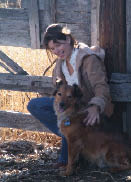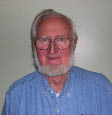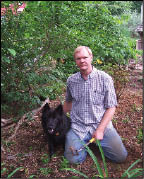Thoreau's Legacy (16 page)
Authors: Richard Hayes

Dumpster Diving:
My Day of Saving 66 Million BTUs
Laura Pritchett
ONE OF THE REASONS I FIND MYSELF IN A DUMPSTER
in my Colorado town has to do with the changing climate. Usually my two children are in the dumpster with me, and usually we’re looking for aluminum, the most abundant metal in the earth’s crust. The symbol for aluminum is Al, and its atomic number is 13, but its most important characteristic is this: it is too chemically reactive to occur in nature as a free metal, so it gets locked in with other elements, mainly in the form of bauxite ore, and freeing it takes an incredible amount of energy.
Basically,
when you hold
an aluminum can
in your hand, you’re holding a bit of a strip mine
and its accompanying piles of tailings, a power plant, and a smelter; you’re holding bits of boats and trains and the fuel required for transportation; you’re holding can- and soda-making factories.
While digging out beer cans from the dumpster, I consider the facts. Recycling the aluminum in cans takes 95 percent less energy than freeing it from bauxite. One pound of aluminum makes about thirty cans, and each can requires about 3,000 BTUs. So for every two or three cans we recycle, we basically save one pound of coal. It sounds complicated, but it’s not. Not when you consider what three cans means in the bigger picture of a clean, pure sky.
After digging in the dumpster for hours, my young son declares that it’s “metal-run time.” In fact, we are overdue at the recycling center, and there’s so much metal in the bed of my old pickup that it looks like a crazy robot, arms and legs sticking out monstrously, threatening to attack the normal cars that dare come near.
While the guys at the center unload and weigh the metal, I entertain the kids with sidewalk chalk: we sit down on the blacktop to draw pictures of the earth and sun and shooting stars. We draw an entire universe, bright and healthy-looking.
Finally, the workers are done: we have 108 pounds of cans, 400 pounds of scrap aluminum, 10 pounds of copper, 174 pounds of radiators, 116 pounds of insulated wire, 25 pounds of soft lead, 23 pounds of stainless steel, 30 pounds of yellow brass, and a bunch of batteries.
If a coal-fired power system were used to produce that amount of aluminum, it would release 18,000 pounds (9 tons) of carbon dioxide into the air. That’s 56 million BTUs, which we’ve saved by recycling. Then there’s the copper—from the wire and radiators—which saves another 10 million BTUs and keeps an additional 3,000 pounds of CO2 from being emitted. And we’re talking just about the aluminum and copper here; we’re not even including how much earth would have been stripped, processed, and laid waste.
Before we leave, I suggest to the kids that we go dumpster diving again. They let out a cheer, and so does a mountainside and the sky. At least I like to think so; it’s enough to keep the heart happy.

Laura Pritchett
is the author of a novel,
Sky Bridge,
and a collection of short stories,
Hell’s Bottom, Colorado,
which won the PEN USA Award and the Milkweed National Fiction Prize. She lives in Bellvue, Colorado.
The Energy of Creation
Donald Hoyle
NOW A RETIRED CLERGYMAN, I STILL REMEMBER,
from my seminary days in the early 1960s, a Franciscan monk who addressed the class. He said that the most important thing is to get your doctrine of creation right, and that if you do, all else will fall into place. I believe he was right, so I hope we will go back to using the natural, God-given sustainable energy from the sun, wind, water, and heat from the ground. Then we will be in accord with the doctrine of creation.
We live in a time when the distribution and uses of energy are way out of balance and supply. As Mahatma Gandhi said, “The good Creator has put enough resources in creation to take care of man’s need but not enough to satisfy man’s greed.” Germany’s secretary of energy once pointed out, when asked how the developing countries would meet their needs in this time of energy shortages and crises, that we all have sun, wind, water, and geothermal energy available, no matter where we live on this planet. Although some places have insufficient water, abundant supplies of the other renewable energy sources can be harnessed.
My own adventure in this time of energy shortages started when I replaced my oil-fueled baseboard hot-water system with geothermal energy from an existing artesian well. I have what is known as a “dump” system, in which water from my artesian well circulates through the system and returns to the ground by way of an existing hand-dug well.
After putting in the geothermal system, I realized that heating and air-conditioning my house would require a lot more electricity. Luckily, I am blessed with a south-facing home that provides considerable passive solar heat and light. By installing photovoltaic panels on my roof, I was able to fulfill all my electrical needs, and I am now self-sustaining.
I believe God has provided for the energy needs of creation.
What we need to do is
start thinking
outside the box
by working in accord with the natural cycles of nature rather than seeking to rape the earth to satisfy our insatiable greed.

Donald B. Hoyle
is a retired United Methodist clergyman. He lives in Mansfield Center, Connecticut, with his wife of forty-eight years.
The Other Part of
the Equation
Howard V. Hendrix
MY WIFE AND I HAVE HAD A TASTE OF A BETTER
future. We’ve been lucky enough, worked hard enough, and made enough sacrifices that we are now able to live where we choose: in the Sierra Nevada, just shy of 5,000 feet in elevation.
We can see the Milky Way at night and breathe without coughing up lung slugs, but it’s no simple Shangri-la. Living here is not easy, which may be why more people don’t choose the far exurban life.
And even here we are not immune to the effects of global warming. Neighbors who have long lived here tell us about new phenomena they’ve never seen before—not just unusual weather but also unexpected flora and fauna. Poison oak, long prevalent in the foothills but extremely rare in our higher forests, has become more common up here. Another foothill species, the tarantula, recently showed up in a neighbor’s driveway. We hope it hitched a ride on a truck from the valley, but we suspect the big, slow-moving spider is a harbinger of the “species creep” that’s coming to our neighborhood.
We are part of that species creep, too. Not just those of us who dwell in old, cut-over timberland, but all humanity. Living in a California forest throws into high relief one aspect of this situation: our species’ million-year dalliance with fire.
Together,
humans and fire
have burned their way clear around the globe.
Applying the ancient technology of fire to the ancient sunlight of fossil fuels is but the latest intensification of our relationship. As surely as playing with fire is like having unprotected sex, global warming is the unintended consequence—the unplanned pregnancy—of our long love affair with ourselves, our technologies, and our dominion over the earth.
My wife and I do what we can. We own a hybrid car and try not to drive “off the hill” more than three days a week. Our house is built in such a way that we don’t need air conditioning. Nearly all our household heat comes from burning, in a superefficient wood stove, the short-term carbon derived from our overcrowded second- and third-growth trees. We’re also returning our forest to pre-1850 conditions by burning selectively and by chipping understory thickets and letting the chips decay in place.
The most important thing we’ve done to shrink our carbon footprint is deciding not to have children, a choice that may have value not only for our household but also for the larger household of the earth. Worldwide, although smaller families currently tend to consume more energy-intensive resources as their wealth increases, it’s also true that the shelter, food, and water required by each additional person enlarges a family’s carbon footprint—regardless of the family’s wealth or poverty.
I’d feel better about the future of life on earth if both the size of our overall human family and our use of resources were not ratcheting up as fast as they are. Until we address both parts of the equation—not only hyperconsumption (by living more simply and using nonfossil energy) but also hyperpopulation (by voluntarily reducing birthrates)—all our “greening” will amount only to spraying slightly less flammable green paint on a forest fire.
The life my wife and I have chosen is not for everyone, but, together with other families choosing other variants, we may be able to keep from “burning down the house.”

Howard Hendrix
has taught literature at the college level for many years and has written science fiction, political essays, and literary criticism. He and his wife live in Pine Ridge, California.
Monetary Capital, Biological Treasure
Lewis Ziska
RECENTLY I HAD LUNCH WITH A SCIENTIST COLLEAGUE who had been active in presenting data on the perils of global climate change to world leaders. He told me that without fail, at the end of a presentation, policymakers would approach him separately and ask quietly, “But my country won’t be affected, right?”
I asked how he responded.
He smiled. “The ones who ask the question are from North America and Europe,” he said. “The ones who consider themselves rich—who think they won’t be impacted by global change.”
“Do they have a point?” I asked.
He sighed. “Rich is relative. There is monetary capital, and there is biological treasure. You understand the difference?”
I thought about this. Money after all, did put food on my table. But then again, so did biology. I stared at my fork. A piece of tomato was stuck to a lettuce leaf.
“Tomatoes,” I said, “are native to Peru, the lettuce originally from Iran.” I took another look at my salad. “The cucumbers came from Armenia, the radish from China.”
I have been a scientist with the U.S. Department of Agriculture for almost twenty years. I know that if you could
look beyond the shelves of the supermarket to see
the evolution of food,
you would be amazed.
I know too that 75 percent of the world’s calories comes from only a dozen crops: barley, maize, millet, oats, rice, sorghum, sugar cane, wheat, white potatoes, sweet potatoes, cassava, and soybeans. None of these crops (except for an ancestor of corn) are indigenous to North America or Europe, the “rich” continents.
If humankind is to find itself in the face of global climate change, we must find varieties of these crops in their native lands that can adapt to extreme temperatures, drought, new weeds, pests, and diseases. Only in biological diversity, the treasure of the “poor” countries, are we likely to find ways to feed the one billion additional people expected to be born in the next decade.
Yet this very treasure is at risk from climate change. The wealth of developing countries lies not in their commercial banks but in their land—land that supports most of the globe’s biological diversity, treasure that will be sold to offset the economic cost of coping with climate change. And it isn’t just food. Flowers, herbs, fungi, medicines—all are at risk.
Did I understand the difference between money and wealth?
“I get it,” I said, putting down my fork. “But what do you actually say to them?”
“I tell them that if they just fend for themselves, all of us will be the poorer for it.”

Lewis Ziska
is a plant physiologist with the USDA’s Agricultural Research Service in Beltsville, Maryland. He is investigating the role of increasing carbon dioxide and changing climate on food security, invasive species, and aerobiology.
